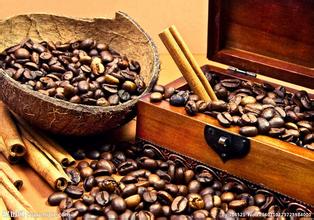Description of taste and flavor of Honduran coffee beans introduction to the producing areas of varieties
Description of taste and flavor of Honduran coffee beans introduction to the producing areas of varieties
High-quality coffee in Honduras uses water washing to deal with coffee beans, usually after soaking, when the defective fruit will surface, it can be discarded first. Then put the good fruit into the fruit peeling machine and peel off the peel with the rotating force of the machine. Peeled fruits are screened by machines to select fruits of high quality. Usually the bigger the fruit, the better the maturity. Coffee in Honduras is dried in the sun, so there is always a hint of fruit in the taste.
Hongdulas coffee has a rich and mellow taste, taste is not astringent, not sour, mellow and aroma are very high, quite personality. Honduran coffee can lead to multiple levels of flavor depending on the degree of roasting. Moderate baking can maximize the sweetness of beans, while deep baking increases bitterness, but sweetness does not disappear. Generally speaking, medium roasting has the best taste and rich and unique aroma, which is favored by coffee lovers in Honduras. Honduras is located in the north of Central America, facing the Caribbean Sea to the north, the Gulf of Fonseca in the Pacific Ocean to the south, Nicaragua and El Salvador to the east and south, and Guatemala to the west, mostly mountains and plateaus. It has a tropical climate, mild temperature and abundant rainfall, so it is an ideal place for coffee growth.
Honduras produces two kinds of coffee of very good quality, which are highly respected by coffee lovers. One is "Highland Coffee", which grows at an altitude of 1000 to 1500 meters, and the other is "selected Highland Coffee", which represents the highest level of Honduras, which grows at an altitude of 1500 to 2000 meters. Most of the Honduran coffee is exported to the United States and Germany.
Coffee beans grown at high elevations are hard, dense, and have the potential to give play to a special flavor. the really amazing coffee growing areas are at high altitude. these beans are picked carefully only in the mature season, generally with the increase in altitude. The aroma of coffee will become increasingly prominent and unique (see figure), from the temperature and sweetness of Brazilian beans at a low altitude of 3500 feet to a surge in the taste of Ethiopian coffee beans above 6000 feet. Altitude will give coffee beans a more complex and subtle taste. The rating of Central American coffee is based on the altitude at which coffee grows.
Mexico, Honduras, Haiti and other countries are rated at a high level.
Strictly High Grown (SHG), followed by High Grown (HG)
Mexico is called Altura, which means high in Spanish, which means high-altitude coffee; Papua New Guinea adds the name "Mile High" to mark coffee beans grown in the highlands and mountains.
On the other hand, in the alpine area, due to the cold climate, the coffee grows slowly, the density of raw beans is higher, the texture is harder, the more mellow and aromatic the coffee is, and it has a supple sour taste; on the other hand, in lower areas, the density of raw beans is lower, the texture is less hard, the quality of coffee is worse, so some people grade it according to hardness.

Important Notice :
前街咖啡 FrontStreet Coffee has moved to new addredd:
FrontStreet Coffee Address: 315,Donghua East Road,GuangZhou
Tel:020 38364473
- Prev

Ethiopia Yega Shefi g2 washed coffee bean cup flavor description region introduction
Ethiopia Yegashefi g2 washed coffee cup flavor description of the region Yegashefi is a small town, 700-2100 meters above sea level, is synonymous with Ethiopian fine coffee It is a wetland since ancient times, and the old saying Yirga means to settle down, and Cheffe means wetland. The way coffee is produced here and the flavor is too prominent to cause Ethiopian coffee
- Next

Introduction of variety characteristics of taste treatment method for flavor description of coffee manor in Kenya
Kenya Coffee Manor Regional Flavor description Taste treatment Variety characteristics Duomen DORMAN is famous for its excellent quality management, providing coffee from all regions of Kenya and Tanzania in addition to strict product control. The company takes sustainable development and ethical procurement as its business strategy, and they are fair to the planting process and the treatment of environmentally friendly farms.
Related
- Detailed explanation of Jadeite planting Land in Panamanian Jadeite Manor introduction to the grading system of Jadeite competitive bidding, Red bid, Green bid and Rose Summer
- Story of Coffee planting in Brenka region of Costa Rica Stonehenge Manor anaerobic heavy honey treatment of flavor mouth
- What's on the barrel of Blue Mountain Coffee beans?
- Can American coffee also pull flowers? How to use hot American style to pull out a good-looking pattern?
- Can you make a cold extract with coffee beans? What is the right proportion for cold-extracted coffee formula?
- Indonesian PWN Gold Mandrine Coffee Origin Features Flavor How to Chong? Mandolin coffee is American.
- A brief introduction to the flavor characteristics of Brazilian yellow bourbon coffee beans
- What is the effect of different water quality on the flavor of cold-extracted coffee? What kind of water is best for brewing coffee?
- Why do you think of Rose Summer whenever you mention Panamanian coffee?
- Introduction to the characteristics of authentic blue mountain coffee bean producing areas? What is the CIB Coffee Authority in Jamaica?

